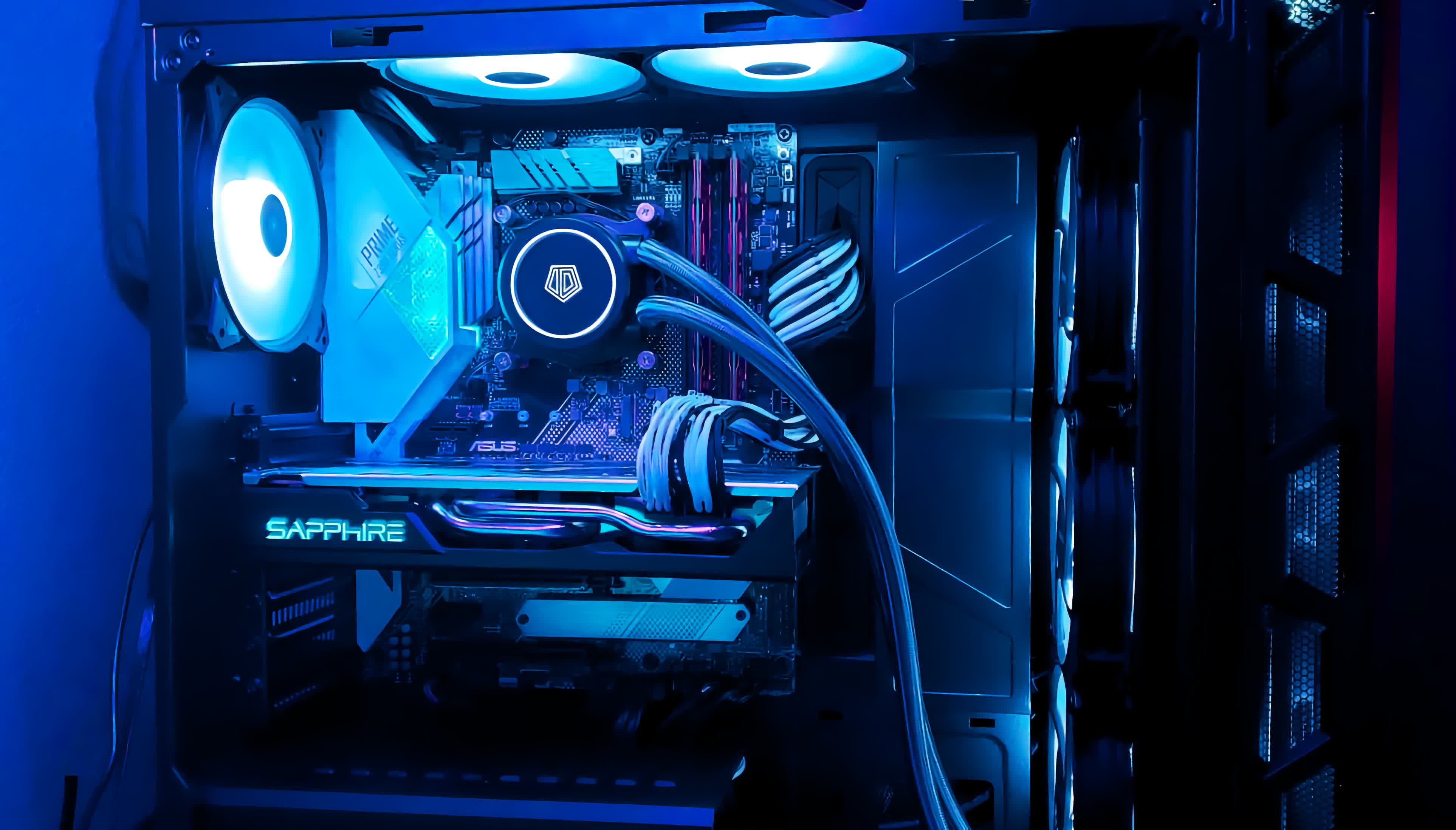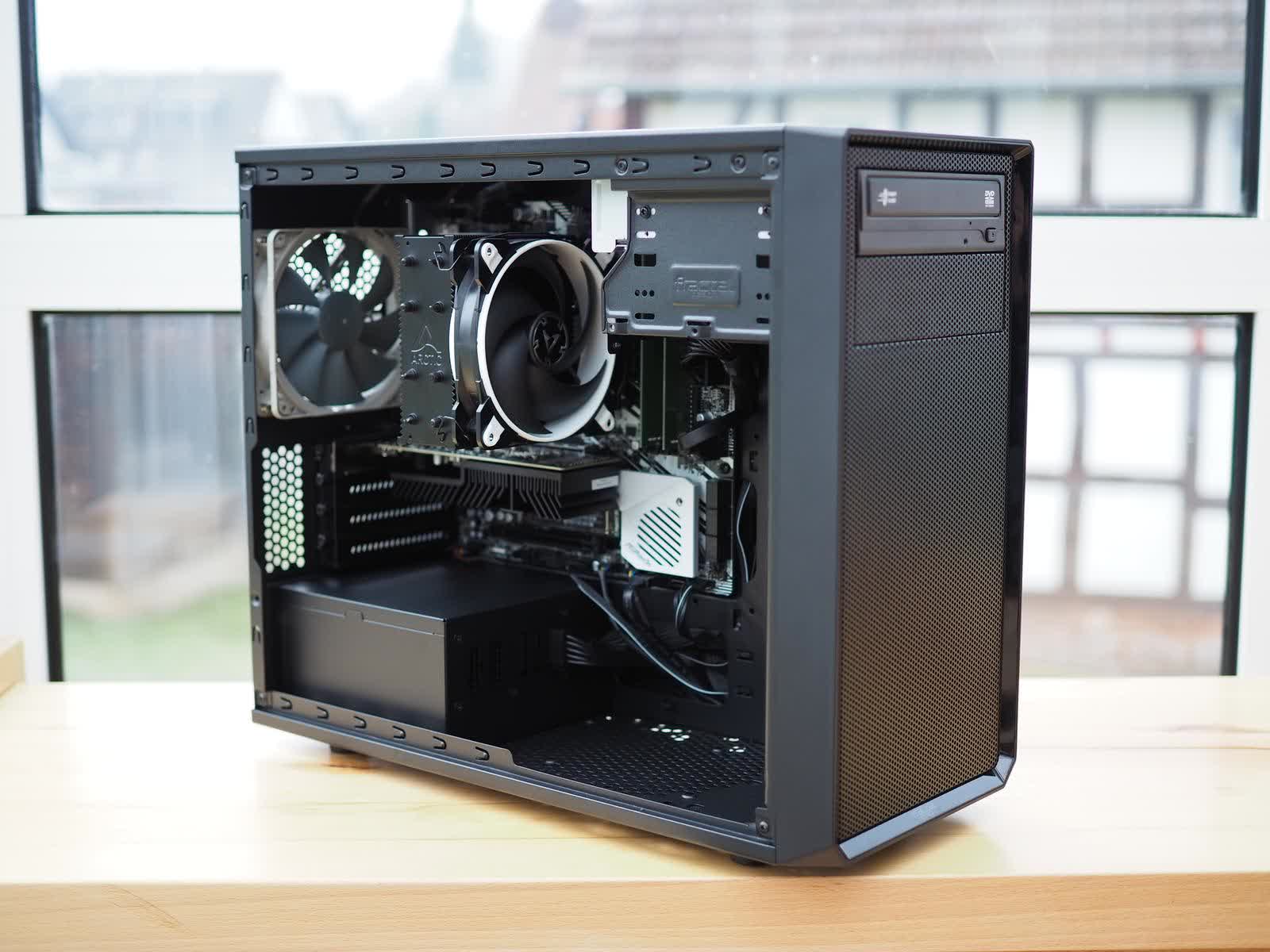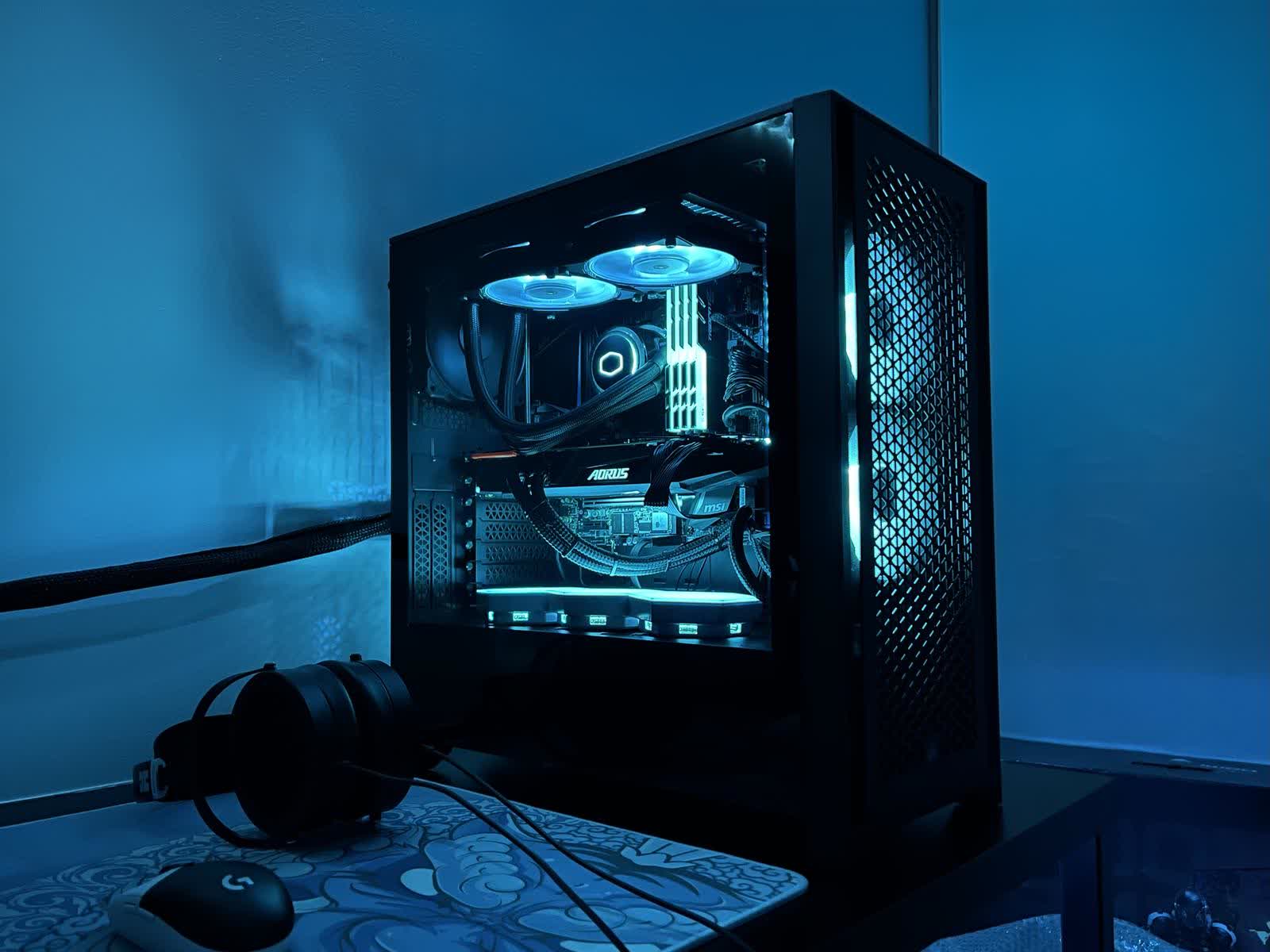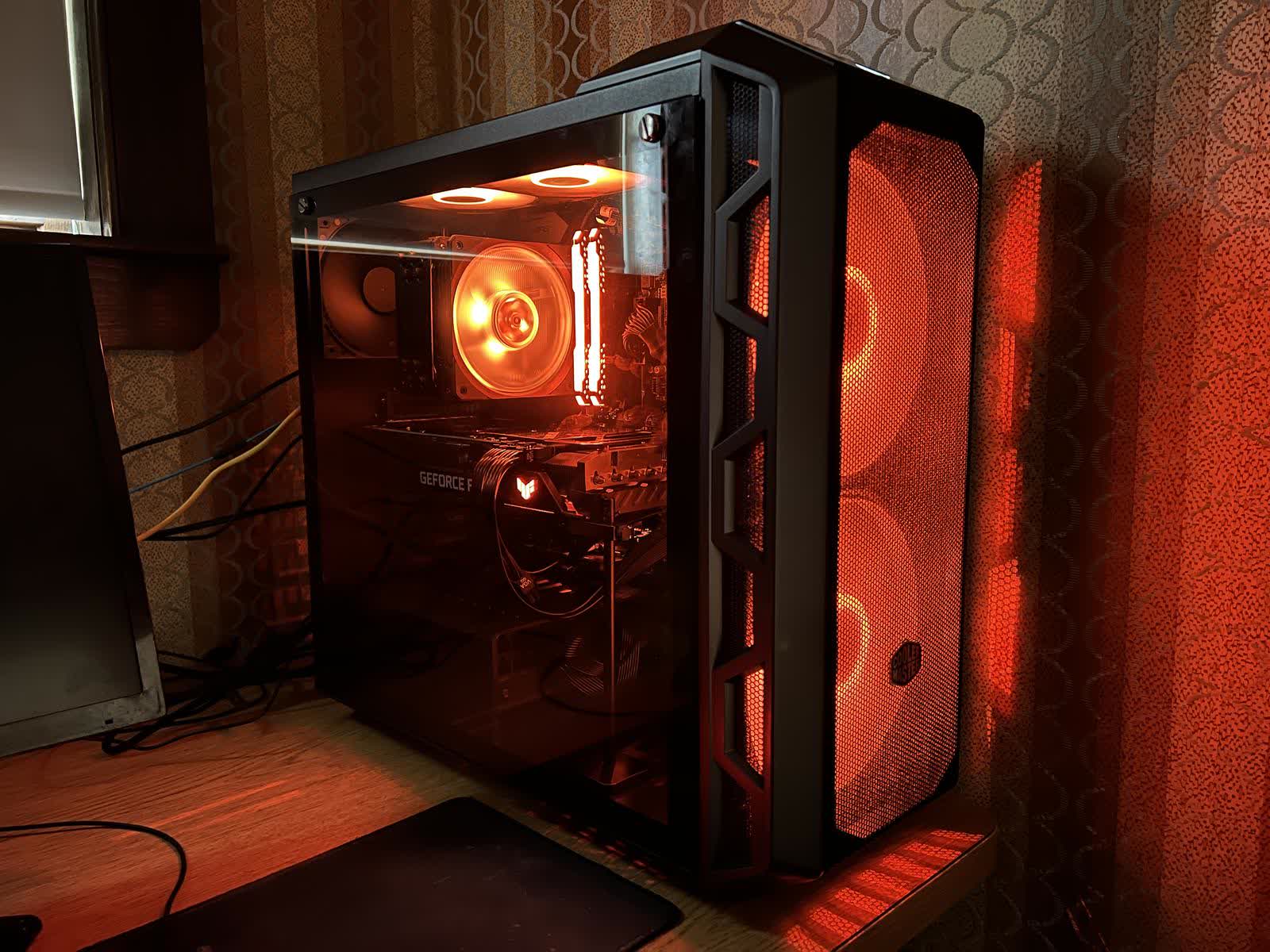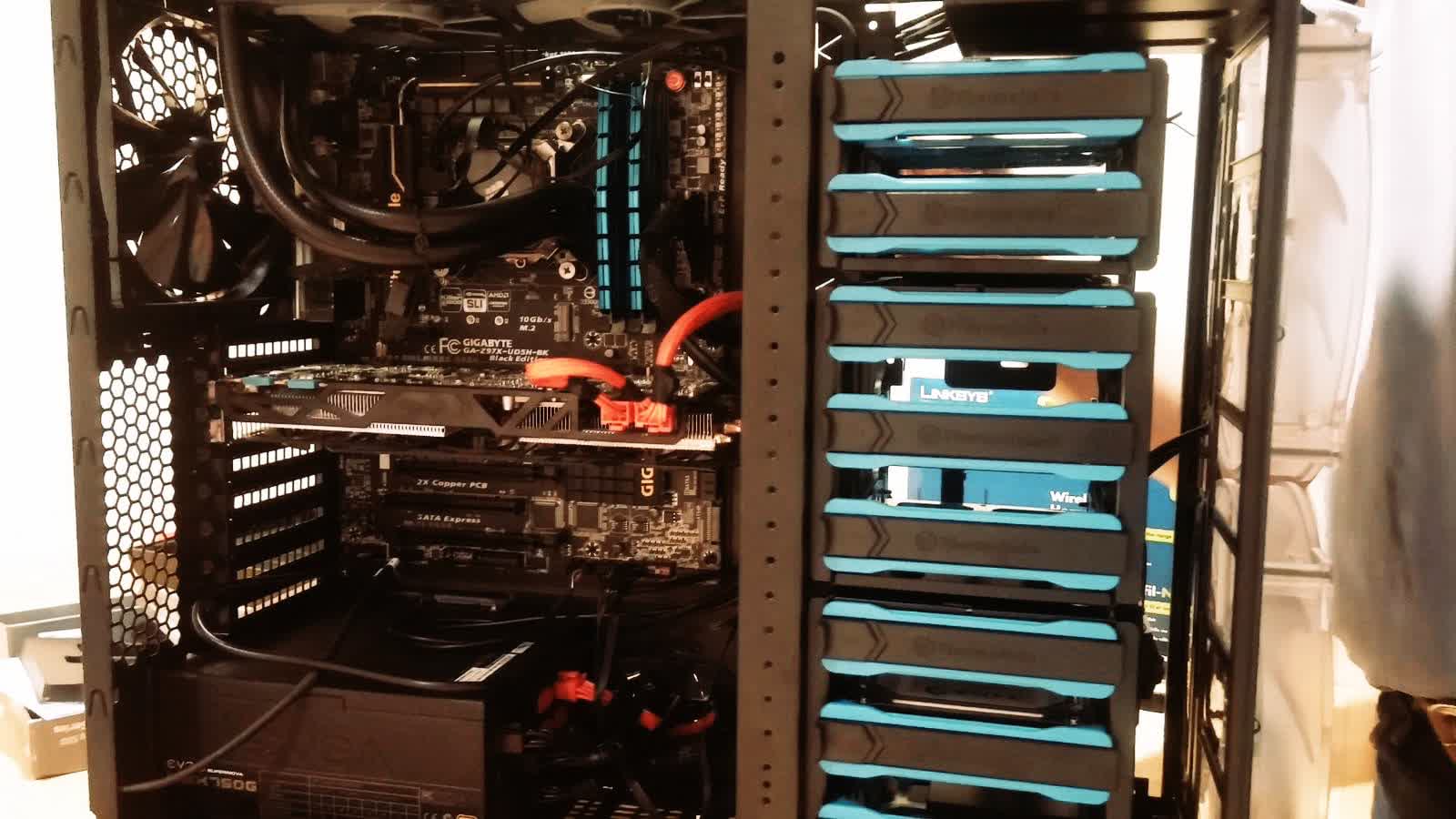See our latest update: TechSpot PC Buying Guide
For the past year, we've asked ourselves whether it was a good time to buy or build a new PC, considering the market was plagued with component shortages and skyrocketing prices. Today, we are asking the same question for a different reason, with next-gen products such as AMD's 7000-series Ryzen CPUs and Nvidia's 4000-series GeForce GPUs around the corner. But first, let's take a look at how the market has changed in the past few months...
AMD has mostly retaken the gaming throne with the revolutionary Ryzen 5800X3D, at least when using affordable DDR4 memory. In games that take advantage of DDR5 memory, Intel's Core i9-12900 processors still have the edge, at the cost of higher power consumption.
The upcoming Ryzen 7000 series may achieve similar performance for much less power, but will still require DDR5 memory and new AM5 motherboards that may be expensive at launch.
Other than that, between two current-gen CPUs with the same number of threads, you should probably pick the cheaper one for gaming, considering cooling and motherboard prices. One exception may be the Ryzen R5 5500, which only has half of the cache offered by the R5 5600 and no PCIe 4.0 support, so it's only worth getting if sold for much less than Intel's Core i5-12400F.
For productivity, AMD dominates. With 64MB of cache and up to 32 threads, the top Ryzen 9 CPUs are faster, or at least more efficient than Intel's offerings, when fully utilized. With the new Threadripper 5000 series offering expensive Pro-models only, Ryzen 9 may be the most sensible choice for core-heavy workloads unless you're building something powerful for your business needs. Yet, if you want DDR5 and PCIe 5.0 support, you should probably wait and see what Ryzen 7000 will have to offer.
Most importantly, all of AMD's graphics cards and all high-end cards from both Nvidia and AMD now sell around their MSRP or below that mark, making this a better time to build all but the cheapest gaming PCs. The only caveat is the upcoming GeForce 4000 series, which may arrive with the high-end parts before the end of the year, creating buyer's remorse.
In this PC Buying Guide update we've included four recommended component lists, meant for different budgets and purposes...
The Remote-Office Box $450
The Value Gaming Rig $1,000
The High-End Gaming Machine $2,000
The Humble Workstation $2,500+
Our recommendations were influenced by availability and pricing at the time of writing.
If a component from the list that you were considering is unavailable or significantly more expensive while you are reading this guide, fear not. We included an explanation for every one of our choices, so that you can make alternative and informed purchases.
The Remote-Office Box
Despite its low price, this system is good for web browsing with tens of open tabs, and even 1080p live streaming. Add a graphics card, and this build becomes a capable gaming machine.
| Component | Product | Price | |
| Processor | Intel Core i3-12100 | $132 | |
| Motherboard | Gigabyte B660M DS3H | $110 | |
| Memory | 16GB (2 x 8GB) DDR4-2933+ CL16 | $50 | |
| Storage | Western Digital SN770 500GB | $55 | |
| Graphics | Integrated | $0 | |
| PSU | Thermaltake Smart BM2 550W | $45 | |
| Case | Fractal Design Focus G Mini | $56 | |
| Monitor, Keyboard & Mouse (see notes) | |||
|
Core System Total
|
$448 | ||
Image credit: The doctor is in by yopoyo
The Intel Core i3-12100 rivals slightly older 6-core CPUs even when those cores are fully utilized. In other situations, it can be up to 50% faster. With a 60W TDP, the Core i3 should be kept cool by the stock cooler in a properly ventilated case.
When relying on the CPU's integrated graphics, it may also be important for the motherboard to have both DisplayPort and HDMI ports for monitor compatibility. The Gigabyte B660M DS3H is one of the cheapest modern motherboards worth buying, with four memory slots, two M.2 slots for storage and USB Type-C. The larger MSI Pro B660-A offers all of that and much better thermal performance for $20 more. If you don't need USB-C, the B660M-A version offers a good combination of size and performance at $125.
A 16GB dual-channel memory kit is the minimum we'd recommend today. Many such kits are available for about $50, so just pick the one you like the best.
With PCIe 4.0 support, WD's 500GB SN770 becomes the best value SSD, offering sequential read/write speeds around 5GB/s. If your budget isn't too stiff, you may want to go with the 1TB version, which is even better value at $100.
The Thermaltake BM2 550W is our budget PSU recommendation, with ratings of 550W and 80 Plus Bronze efficiency, 5-year warranty, and semi-modular design that lets you disconnect the cables you don't need. The EVGA 500 BQ is also good, but offers 3 years of warranty.
For our choice of an mATX motherboard, we can go with an equally compact mATX case, and so we did as an ATX case would look empty without a graphics card. Fractal Design's Focus G Mini combines old and new, with two external 5.25" bays and top 240mm radiator support. If you don't need those things, the Thermaltake Versa H18 is a good alternative for $5 less. If you do want to install a graphics card (and especially if you go with a full-ATX motherboard), you may prefer the full-sized Focus G for a similar price.
Monitor, Keyboard & Mouse
If you are considering this system, then we're assuming that you'd prefer work comfort over gaming performance. Yet, with current prices, we see no reason not to go with a "gaming" monitor that offers refresh rates up to 144Hz (we wrote a guide on how to enable them) in addition to an IPS panel and a height-adjustable stand.
For more professional look and a high-quality stand, check out the ViewSonic Omni XG2405. The AOC 24G2 is another great option for the price. More options for different budgets can be found in our best monitors feature.
Logitech's highly ergonomic MK570 is our recommended keyboard and mouse combo at this price point. For more options, see our lists of best keyboards and mice.
The Value Gaming Rig
This PC is meant for those who want to get the best experience for their money in the latest games.
| Component | Product | Price | |
| Processor | Intel Core i5-12400F | $180 | |
| CPU Cooler | Be Quiet! Pure Rock 2 Black | $45 | |
| Motherboard | MSI Pro B660-A | $130 | |
| Memory | 32GB (2 x 16GB) DDR4-3600 CL18 | $100 | |
| Storage | Western Digital SN770 1TB | $100 | |
| Graphics | AMD Radeon RX 6600 | $260 | |
| PSU | EVGA 650 G5 | $60 | |
| Case | Corsair 4000D Airflow | $95 | |
| Monitor, Keyboard & Mouse (see notes) | |||
|
Core System Total
|
$970 | ||
Image credit: Corsair 4000D Teal by WillT07
When running the latest games with high settings, you'd need a very expensive graphics card to show performance differences between modern 6-core CPUs. Intel's Core i5-12400F and MSI's Pro B660-A are a winning combination.
The MSI motherboard is the only one at its price range that can handle not only the i5 CPU but also sensible upgrades like the Core i7-12700. If you want a board that can also withstand an extreme upgrade, such as the Core i9-12900K, the B660 Tomahawk WiFi and the more compact B660M Mortar WiFi will easily justify their price.
AMD's Ryzen 5 5600 is a strong alternative at $176, but motherboards comparable to the B660-A Pro are more expensive. Asrock's B550 Extreme4 seems to offer the best balance between thermal performance and price. MSI's B550 Tomahawk and Asus' ROG Strix B550-F Gaming are excellent, but cost more.
The mentioned CPUs ship with the middling RM1 and Wraith Stealth coolers, which you should probably replace with something better. These processors are power efficient, and don't need the heaviest and most expensive coolers on the market. We chose the Pure Rock 2 Black from Be Quiet! for its combination of looks, compact size, acoustic efficiency and price. The Arctic Freezer 34 eSports Duo and the Noctua U12S Redux would also work fine.
With current memory prices, we see no reason to get less than 32GB. All modern CPUs work great with RAM speeds up to 3600MHz, and with a CL18 latency such modules are also affordable. Many kits of 2 x 16GB cost about $100 these days. If you see a good 4 x 8GB kit for a similar price, go for it. A 1TB Western Digital SN770 will take care of our storage needs.
AMD's Radeon RX 6600 is the cheapest GPU we'd recommend buying new. The Radeon RX 6500 XT is basically a laptop GPU in disguise, and since its release things in the sub-$200 segment have gotten worse and worse. The RX 6600 will consistently outperform Nvidia's more expensive GeForce RTX 3050 by a large margin, unless you enable ray tracing.
The EVGA 650 G5 PSU provides 650W at 80 Plus Gold-level efficiency, a 10-year warranty and a fully modular design for a great price. Our case of choice for this build is the Corsair 400D Airflow, and the main reason for that is in its name.
If you plan to put your PC on a desk, you may prefer the shorter Lian Li 011 Air Mini. If you want a case with external 5.25" drive bays and more internal drive bays, check out our best old-school cases guide. Anyway, our general best cases guide includes more great options for under $100.
Monitor, Keyboard & Mouse
The Radeon 6600 is capable of 1440p gaming at 60 fps with high settings, or at 144 fps with lower settings or in less-demanding games. The HP X27q will let you do all of that on a 27" IPS display for a fair price. Clearly, there are dozens of good monitor options you can choose from and that's why we have entire guides dedicated to monitor shopping and gaming monitors especifically.
The Logitech G502 Hero is a safe bet for a mouse, and so is Corsair's K55 RGB Pro for a keyboard. If you prefer mechanical keys and a compact size over a numpad and a detachable wrist rest, you can go with Redragon's K552 RGB Kumara. Once again, our best gaming monitors, mice and keyboards guides include more options for more specific needs and budgets.
The High-End Gaming Machine
This build is for those of you who care less about performance per dollar, and more about absolute performance and the latest features. With the latest high-end GPUs, gaming at resolutions higher than 1440p is a sensible option, and this build will let you do just that.
| Component | Product | Price | |
| Processor | AMD Ryzen 7 5800X3D | $439 | |
| CPU Cooler | Be Quiet! Pure Rock 2 Black | $45 | |
| Motherboard | Asrock X570 Taichi | $224 | |
| Memory | 32GB (4 x 8GB) DDR4-3600 CL16 | $155 | |
| Storage | Seagate FireCuda 530 2TB | $250 | |
| Graphics | Nvidia GeForce RTX 3080 12GB | $781 | |
| PSU | EVGA Supernova 1300 GT | $177 | |
| Case | Cooler Master MasterCase H500 | $136 | |
| Monitor, Keyboard & Mouse (see notes) | |||
|
Core System Total
|
$2,030 | ||
Image credit: Gaming Desktop V2 by hubertle8563
AMD's Ryzen 7 5800X3D is the first consumer CPU to use 96MB of 3D V-Cache for lower latency than any gaming processor on the market. It's also efficient enough to use the same Be Quiet! Pure Rock 2 Black from the previous build.
If you want more than one SSD to be able to work at PCIe 4.0 speeds in the future, you'll need the X570 chipset. For the price, Asrock's Taichi is probably the best choice, but if you must have a top-quality mainstream board, you can spend a bit more for the Asus ROG X570 Crosshair VIII Hero.
If you play games at higher resolutions, you can save some money going with Intel's Core i7-12700F. When fully utilized, that CPU consumes a lot of power, so you'll need a good cooler, such as Noctua's NH-D15.
The MSI Pro Z690-A technically offers the best value alongside the Core i7, with the Asus Prime Z690-P as a good alternative, but if you want something flashier, the MSI Edge WiFi isn't much more expensive these days.
As we have shown, four memory sticks are likely to be faster than two even on a dual-channel system. CL16 latency is the sweet spot for a 3600MHz speed in terms of price.
The Seagate FireCuda 530 is the best M.2 SSD on the market, with a sustained write speed up to twice as fast as its competitors, and not only a 5-year warranty, but 3-year rescue data recovery services. It's also not more expensive than its competitors.
The GeForce RTX 3080 is the best high-end GPU you can buy without feeling that you were completely ripped off, largely due superior ray tracing performance over Radeon cards. The 12GB version can be bought for about the same price than the 10GB one, too, if you look closely.
Considering the rumors regarding the power consumption of next-gen GPUs, we chose to go big (in wattage) with the compact EVGA Supernova 1300 GT.
With two front 200mm fans, the Cooler Master Mastercase H500 will make sure that the system remains cool. More expensive versions of it include features like front USB-C and more flexible radiator support. Again, our best cases, best short cases and best old-school cases guides include more good options.
Monitor, Keyboard & Mouse
The best 4K proper gaming monitors for the money right now are Gigabyte's M28U and M32U. If you want HDR, you can add a bit for the Sony Inzone M9. If you'd rather play on a TV, check out LG's C2 OLED.
If you prefer a different shape or resolution, we have a dedicated article revisiting the different top choices including Samsung's Odyssey G9 49" Curved and Alienware AW3423DW 34", or for a more value-oriented choice, the Gigabyte G34WQC Ultrawide Curved. With a 34" 3440x1440p VA panel, it offers a very immersive experience and great contrast.
If you want to feel like you have a better mouse than the average person's, Logitech's wireless G604 Lightspeed is the one for you. Similarly, the Corsair K100 RGB Optical-Mechanical keyboard comes with an aluminum body and premium switches. Our best mice and keyboard guides include more options.
The Humble Workstation
Considering its price, this machine is great for any workload you can think about, from 4K video rendering to any kind of 3D modeling. It can also play games as well as the best gaming PCs if you equip it with a fast GPU. It's not cheap, but for what it can do, it's a really good value.
| Component | Product | Price | |
| Processor | AMD Ryzen 9 5950X | $547 | |
| CPU Cooler | Be Quiet! Dark Rock 4 Pro | $90 | |
| Motherboard | Asrock X570 Taichi | $224 | |
| Memory | 64GB (4 x 16GB) DDR4-3600 CL16 | $340 | |
| Storage | Seagate FireCuda 530 2TB | $250 | |
| Graphics | Nvidia GeForce RTX 3080 12GB | $781 | |
| PSU | EVGA Supernova 1300 GT | $177 | |
| Case | Thermaltake Core V71 | $165 | |
| Monitor, Keyboard & Mouse (see notes) | |||
|
Core System Total
|
$2,574 | ||
Image credit: Daedalus by canadianwalrus
With 32 threads and 64MB of cache for $550, the Ryzen 9 5950X is the obvious choice for this system. If you want anything better, you'll need to either wait for the Ryzen 7000 series, which may be more expensive for a while, or spend thousands of dollars on a Threadripper.
The 5950X is surprisingly efficient, too, so instead of going with the outright best CPU cooler, we could go with the one with the best performance to noise ratio among active coolers: the Be Quiet! Dark Rock 4 Pro. Our motherboard recommendations are the same as in the build above: Asrock X570 Taichi for most people, and Asus ROG Crosshair VIII Hero for those who want the best. We chose RAM with the same speed and latency as the kit we chose for the best gaming system, but twice the capacity.
A 2TB Seagate Firecuda 530 should be sufficient for regular work unless you have very specific storage demands. An archive of all your work will probably be safer on external drives or on a NAS.
Choosing the best graphics card for this system greatly depends on the programs you'll be working with. We recommend that you search the web for relevant benchmarks before making your choice. In rare cases (Siemens NX is a prime example), professional Quadro and Radeon Pro graphics cards may justify their price with certain ease. As a default, we'll keep the same recommendation from our previous build: the 12GB GeForce RTX 3080.
Our PSU recommendation remains the same as the previous system as well: the EVGA Supernova 1300 GT. For a case, we chose Thermaltake's Core V71 Tempered Glass Edition for its value, airflow and versatility, including its two 5.25" external drive bays. As always, our best cases, best short cases and best old-school cases guides include more options.
Monitor, Keyboard & Mouse
Some of the most comfortable and accurate mice and keyboards we use include the Logitech MX Master 3 and Das Keyboard 4Q.
Choosing a monitor may be more complex. As with storage, you may have special needs and requirements for work. If you want to view your 3D models in great detail and comfort, Dell's Ultrasharp U3219Q is a great choice with its 4K IPS panel.
If you edit 4K movies, though, the higher-end Ultrasharp UP3221Q uses Mini-LED for greatly improved contrast and qualifies for HDR 1000. It also has a true 10-bit panel, and can display colors that very few monitors can.
Masthead credit: Tuxedo by JMTsujioka
